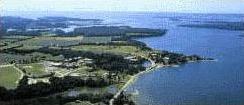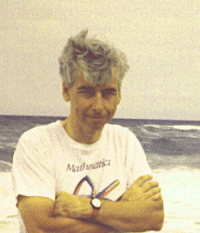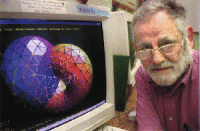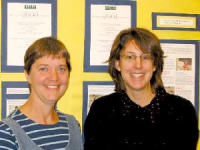
|
The Mathematical Association of America Maryland-District of Columbia-Virginia Section |
- Home
- History
- Main History Page
- Section History Document
- List of Past Officers
- Charter Members
- African-American Participation
- Stories from Section Members
- Section NExT Fellows
- Obituaries
- Smith Award Recipients
- Christensen Award Recipients
- Meritorious Service Award Recipients
- Undergraduate Award Winners
- Meeting Archive
- Past Meetings
- Talk Archive
- Old Section NExT Programs
- Newsletter Archive
- Meeting Minutes Archive
- Miscellaneous Documents
- Meetings
- Minutes
- Fall 2024 Executive
- Fall 2024 Membership
- Spring 2024 Executive
- Spring 2024 Membership
- Fall 2023 Executive
- Fall 2023 Membership
- Spring 2023 Executive
- Spring 2023 Membership
- Fall 2022 Executive
- Fall 2022 Membership
- Spring 2022 Executive
- Spring 2022 Membership
- Fall 2021 Executive
- Fall 2021 Membership
- Spring 2021 Executive
- Spring 2021 Membership
- Fall 2020 Executive
- Fall 2020 Membership
- Fall 2019 Executive
- Fall 2019 Membership
- Spring 2019 Executive
- Spring 2019 Membership
- Fall 2018 Executive
- Fall 2018 Membership
- Spring 2018 Executive
- Spring 2018 Membership
- Fall 2017 Executive
- Fall 2017 Membership
- Spring 2017 Executive
- Spring 2017 Membership
- Minutes Archive
- Newsletters
- Section NExT
- Awards
- Students
- Links
- Search
Spring 2002 Meeting at St. Mary's College of Maryland
The spring meeting of the MD/DC/VA Section of the MAA was held on April 12 and 13 at St. Mary's College of Maryland, St. Mary's City, MD.
Invited Addresses
Brian HayesAuthor and Writer on Mathematics and Related SubjectsBanquet Address: On the Teeth of Wheels: A Story about a Clockmaker, a Number Theorist and a Reward of $2.56 Abstract: Until recently, the raw material for building computational machinery was not silicon but brass. Two thousand years ago an elaborate train of brass gears drove a calendrical computer called the Antikythera Mechanism, and the same basic technology of toothed wheels was still ascendant when Charles Babbage designed his calculating engines in Victorian England. Through such devices, gearwork has contributed to the computational branches of mathematics, but knowledge has flowed in the other direction as well, because mathematical tools are needed to make gears that mesh properly. This talk will discuss a moment in the late 19th century when gear grinders and mathematicians had a particularly close encounter. A German number theorist and a French clockmaker -- each unaware of the other's work -- conceived a mathematical structure now called the Stern-Brocot tree. That structure was an essential ingredient in a theorem proved at the very end of the 20th century. Biographical Sketch: Brian Hayes writes the Computing Science column for American Scientist magazine. Formerly he was the editor of American Scientist, and earlier still was a writer for and editor of Scientific American. In 1999 he was Journalist in Residence at the Mathematical Sciences Research Institute in Berkeley. His article "Clock of Ages" in "The Sciences" recently won a National Magazine Award as the best essay of 1999. Later this year he will spend a semester at the International Center for Theoretical Physics in Trieste, Italy. When he is not writing about mathematics and computer science, Hayes is at work on an illustrated book titled "Infrastructures: A Field Guide to the Industrial Landscape", to be published by W. W. Norton. He is a member of the MAA and the AMS, a Fellow of the AAAS, and an honorary life member of Sigma Xi. A list of his recent publications, with links to articles is at: http://www.amsci.org/amsci/other/BPH.html. 
George FrancisUniversity of Illinois at Urbana-ChampaignInvited Address: The Geometrical Puppetshow Abstract: Skiing at relativistic speeds, dodging a gravitational lens, flying through hyperbolic space, viewing a sphere turning itself inside out (from inside and out), these are just some of the ways of using computer graphics to simulate "impossible" phenomena. Impossible to render in a photo-realistic manner, such mathematical ideas are conveyed meta-realistically in these puppetshows. What corresponds to the wood, cloth, paint, and baubles of puppets is the graphics hardware and its programming languages. The puppet itself is a real-time interactive computer animation. The puppeteer is a student or alumnus of my courses, teacher institutes, research experiences for undergraduates, projects etc. Sometimes, the stage is as grand as the CAVE or the CUBE virtual environments, or a videotape shown at international conferences, like the "Optiverse", or even a talk to a friendly audience. But mostly, we put on our puppetshows to understand homotopies, 4-D phenomena, non-Euclidean geometry and other hard to imagine stuff. This presentation is accessible to general audiences. It includes videos and live computer animation, and is supported by websites and software that can be downloaded to popular PC platforms. Biographical Sketch: George Francis is professor of Mathematics and the Campus Honors Program, and senior research scientist at the National Center for Supercomputing Applications at the University of Illinois at Urbana-Champaign. He received his BSmcl from Notre Dame in 1958, an AM from Harvard in 1960, and the PhD in mathematics from the University of Michigan in 1967. Honors include: Woodrow Wilson Fellowship (1959), Lloyd Postdoctoral Fellow (1968) and the Amoco Award for Innovation in Undergraduate Instruction (1994). He is a member of SIAM. His research is in mathematics, computer science, education in science and mathematics, and history of the calculus. Math topics include: descriptive topology, geometry, Riemann surfaces and control theory. The computer graphics research includes visual mathematics and dynamical systems. Combining research and education, he has involved undergraduates in his research. Among many results is his development of the CAVE, a virtual reality theater. His book, "A Topological Picturebook" (Springer-Verlag, 1987) has been translated into Russian and Japanese. Professor Francis has been teaching graduate and undergraduate courses in geometrical computer graphics. His "illiView" team of students presented the "Etruscan Venus" in the Interactive Image exhibit at the Chicago Museum of Science and Industry, "A post-Euclidean Walkabout" in the CAVE virtual reality theater at Siggraph'94, the "Laterna mathMagica" on the at Supercomputing'95, and "Superball" at Supercompting'98. The sphere eversion video, "The Optiverse", was shown at Siggraph'98, and the International Congress of Mathematicians, Berlin. Prints of his work hang on the wall of the Director of Mathematical Sciences, NSF, Washington, DC. Prof. Francis's most industrious and appreciated collaborators are the undergraduate students who work with him. With them he has developed the "Audible Sketchpad for the CAVE" at the NCSA, and "illiMath2001" in his department. 
Caren Diefenderfer and Trish HammerHollins UniversityInvited Panel: Panel on Quantitative Reasoning (QR) Abstract: The National Council on Education and the Disciplines (NCED) has recently published "Mathematics and Democracy: The Case for Quantitative Literacy." This document cites the quantitative reasoning program at Hollins University as one of nine exemplary national programs addressing important quantitative literacy issues. The Hollins program, "Quantitative Reasoning (QR) Across the Curriculum", consists of a QR Basic Skills requirement and a QR Applied Skills requirement. The goal of the program is to ensure that all Hollins graduates have not only a mastery of basic quantitative reasoning skills but also an appreciation for how these skills apply to the liberal arts curriculum. With the support of the National Science Foundation, Hollins professors Caren Diefenderfer and Trish Hammer have led the Hollins community in QR activities during 2000-2001. Main focus has been on faculty development of Applied QR courses. Hollins now has 37 such courses. They are in: art, biology, business, chemistry, classics, computer science, economics, history, math, philosophy, physics, political science, psychology, sociology, statistics, theatre, and women's studies. Panelists will give an overview of the very successful QR program at Hollins, discuss creative applications of quantitative reasoning, and evaluate experiences in learning about QR through a series of NSF funded workshops. In addition to Diefenderfer and Hammer, the panel includes Hollins professors Christina Salowey of Classical Studies and Andre Spies of History. Biographical Sketch: Caren Diefenderfer (left in photo), Associate Professor of Mathematics, joined the Hollins faculty in 1977. Her scholarly interests involve cryptanalysis, applications of linear algebra and computer graphics. She is currently working with a senior on connections between mathematics and music. The paper investigates the Pythagorean scale and its relationship to the equal temperament scale. Diefenderfer received her A.B. from Dartmouth and her M.A. and Ph.D. from the University of California in Santa Barbara. Professor Diefenderfer has been active in MAA activities for many years. She was the Secretary and Newsletter Editor of our section from 1982-1985. She participated in the IMTP (Interactive Mathematics Text Project) of the MAA in 1993 and was chosen to be a developer of interactive texts. Presently, she is serving a second term on the Quantitative Literacy subcommittee of CUPM. Other professional activities include work with Sigma Xi and the College Board. Diefenderfer has been a faculty consultant, table leader and exam leader at the AP Calculus reading during the past 15 years. See http://www1.hollins.edu/homepages/diefenderfercl/homepage.htm for more information. Biographical Sketch: Trish Hammer (right in photo), Associate Professor of Mathematics, joined the Hollins faculty in 1990. Her scholarly interests involve mathematical modeling in several disciplines including medicine, biology, physiology, and physics. Her current work involves parameter identification in modeling of the wolf and moose populations on Isle Royale. Other work in parameter identification in partial differential equations has appeared in the Journal of Mathematical Systems, Estimation, and Control and in the MAPLE Technical Newsletter. Hammer received her B.S., M.S., and Ph.D. degrees in mathematics from Virginia Tech. She is actively involved in the development of a quantitative reasoning (QR) across the curriculum program at Hollins. With Professor Caren L. Diefenderfer, she received an NSF grant for 2000-2002. This grant supported on campus visits by outside QR scholars as well as follow-up QR workshops during which Hollins faculty developed applied quantitative reasoning courses. Professor Hammer teaches a variety of undergraduate courses including real analysis, transition to advanced mathematics, calculus, differential equations, linear algebra, precalculus, and a senior seminar course which include such topics as glottochronology (dating languages), fractals, chaos, mathematical models of blood cell populations, predator-prey populations and cryptanalysis. See http://www1.hollins.edu/homepages/hammerpw/homepage.htm for more information. |
Copyright © 2012 - The Mathematical Association of America
Please send comments, suggestions, or corrections for this page to Brian Heinold at heinold@msmary.edu
Last Modified: 03/05/2012 - 09:16pm